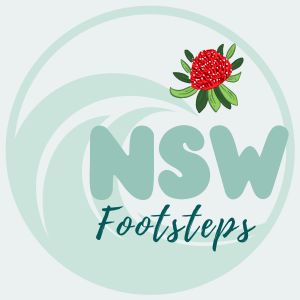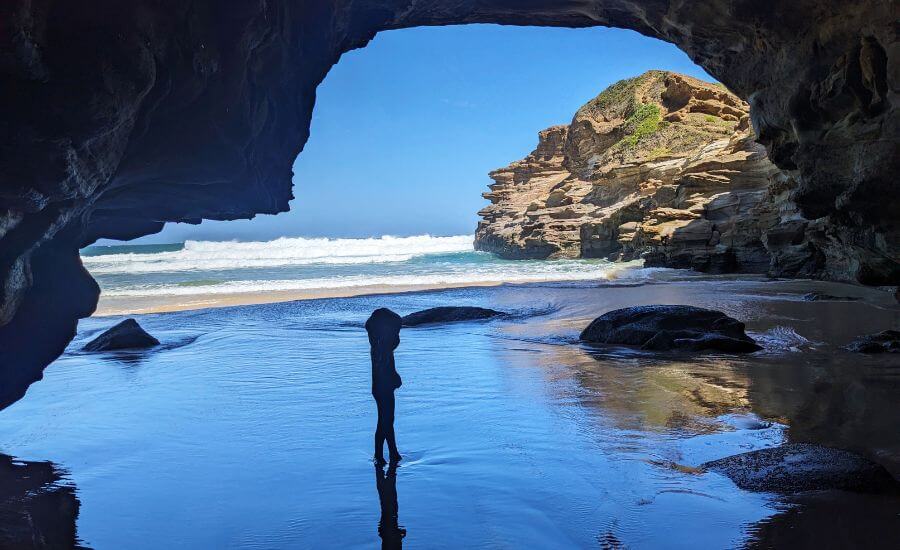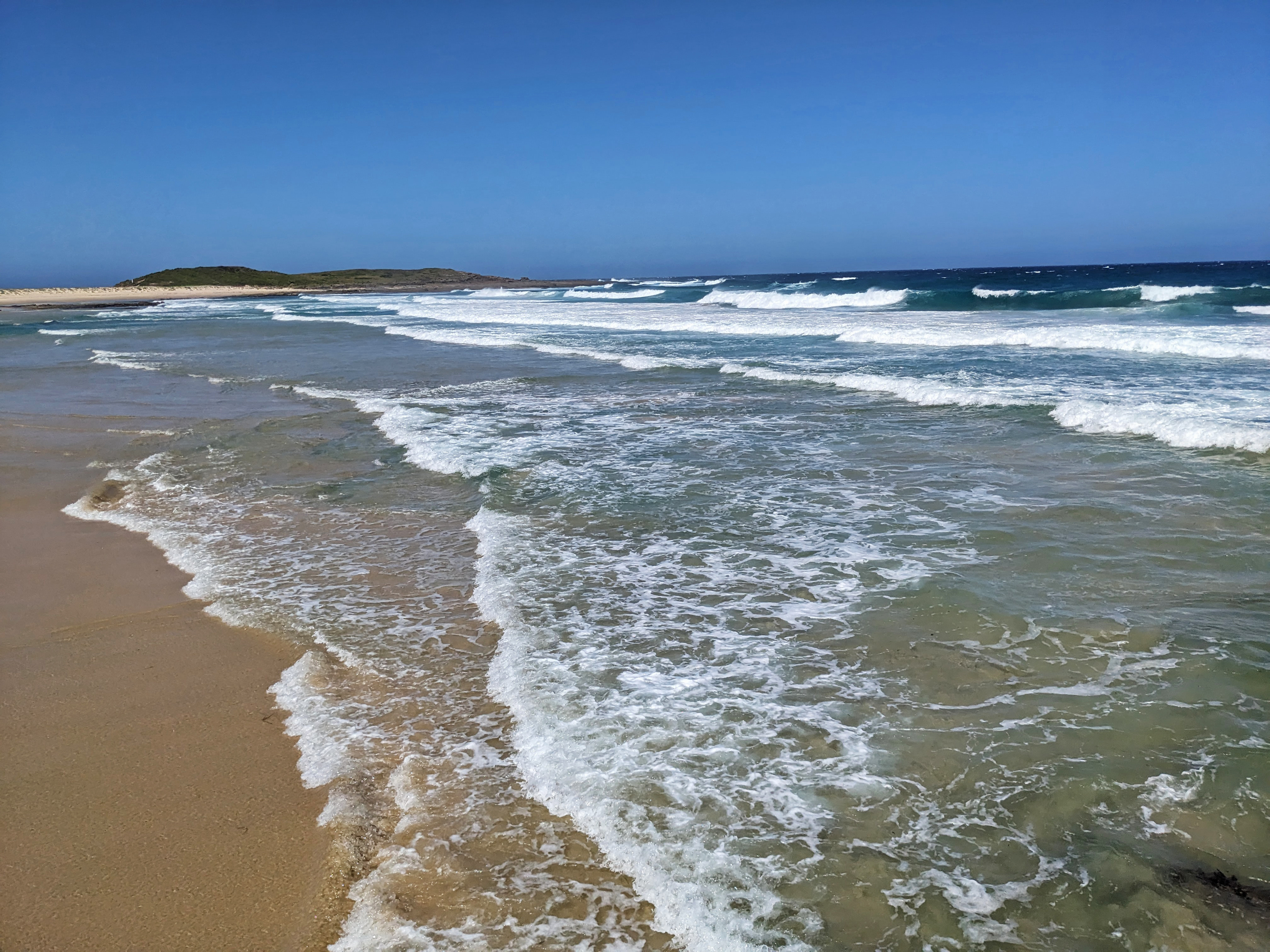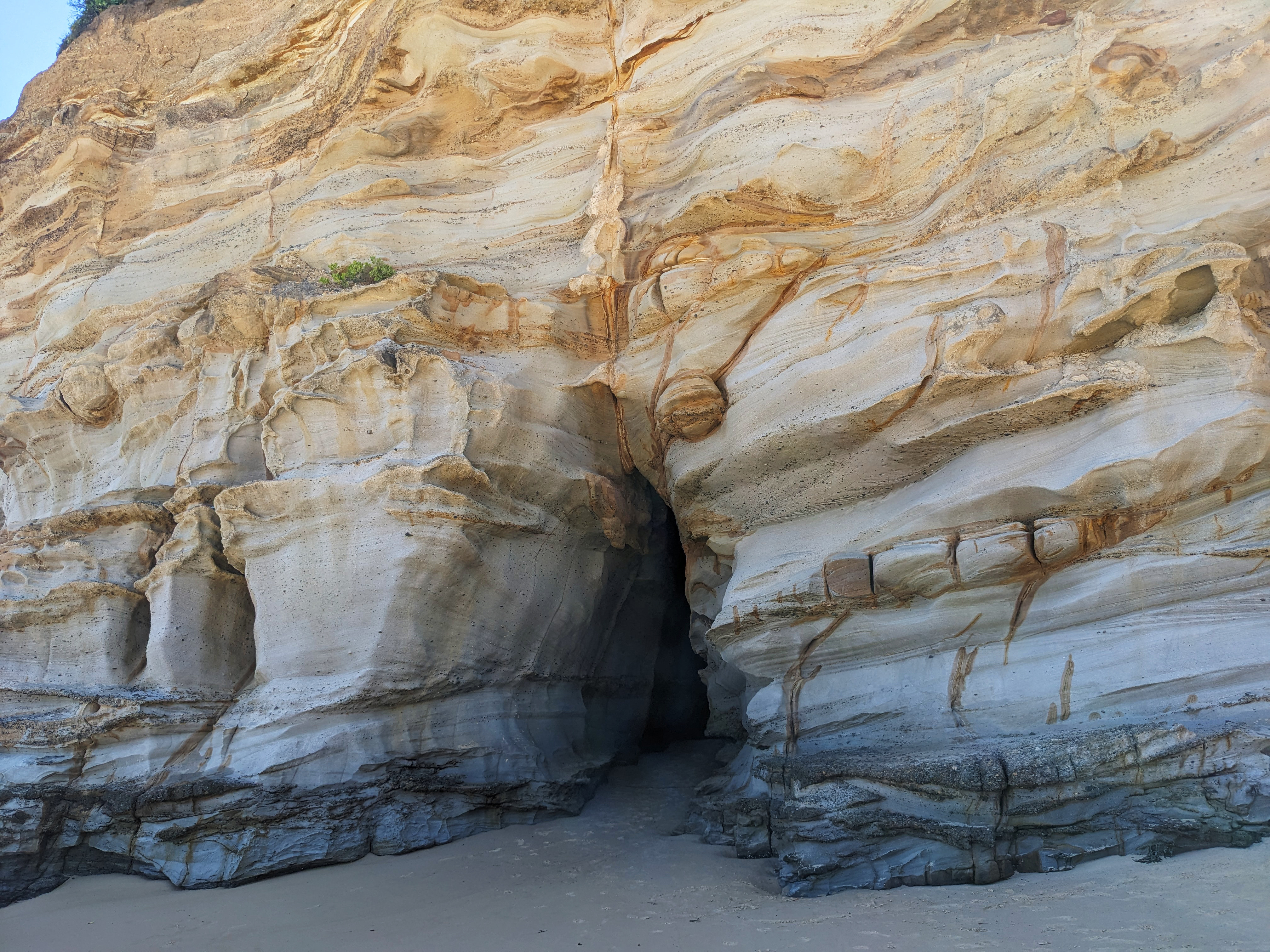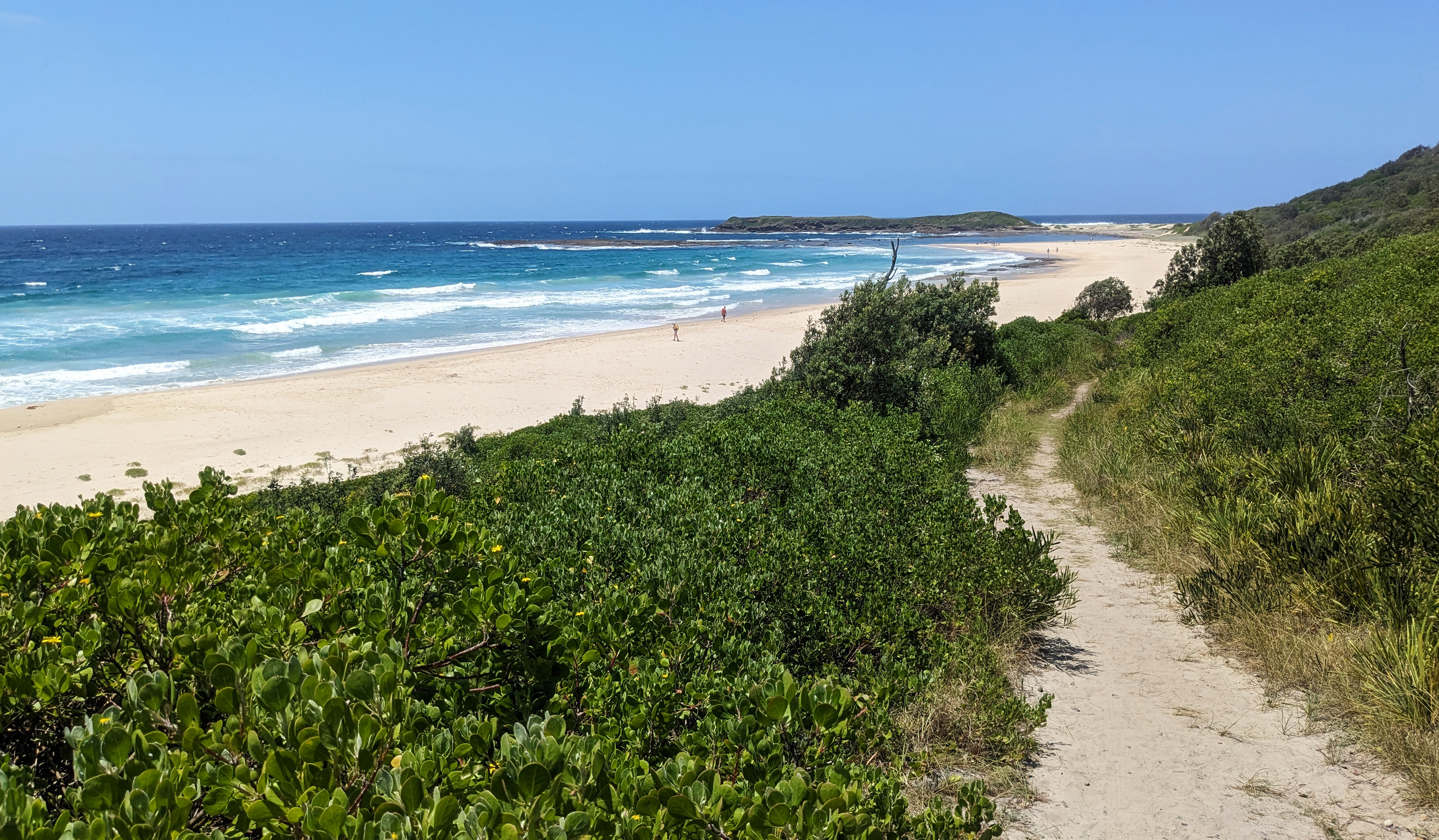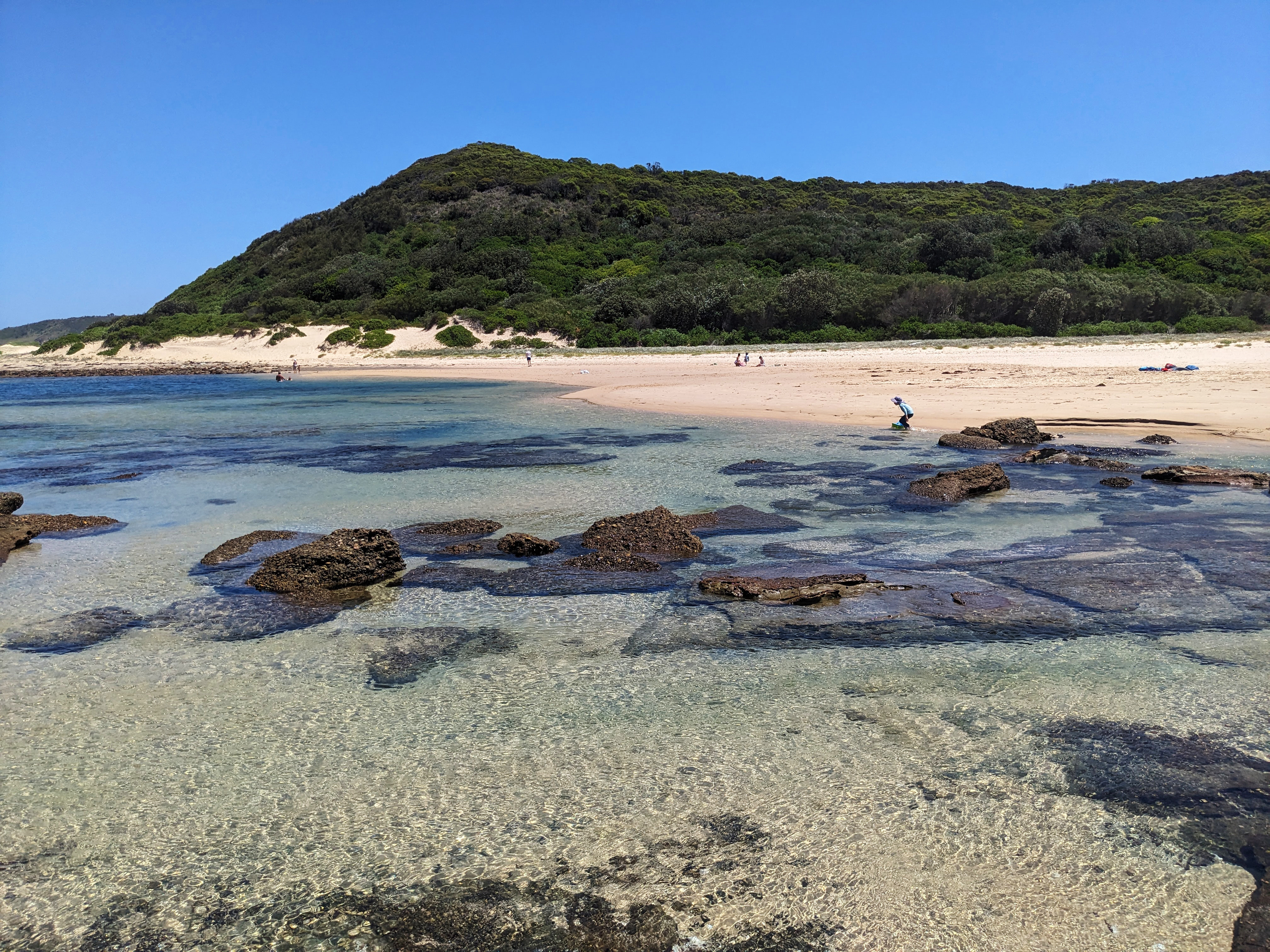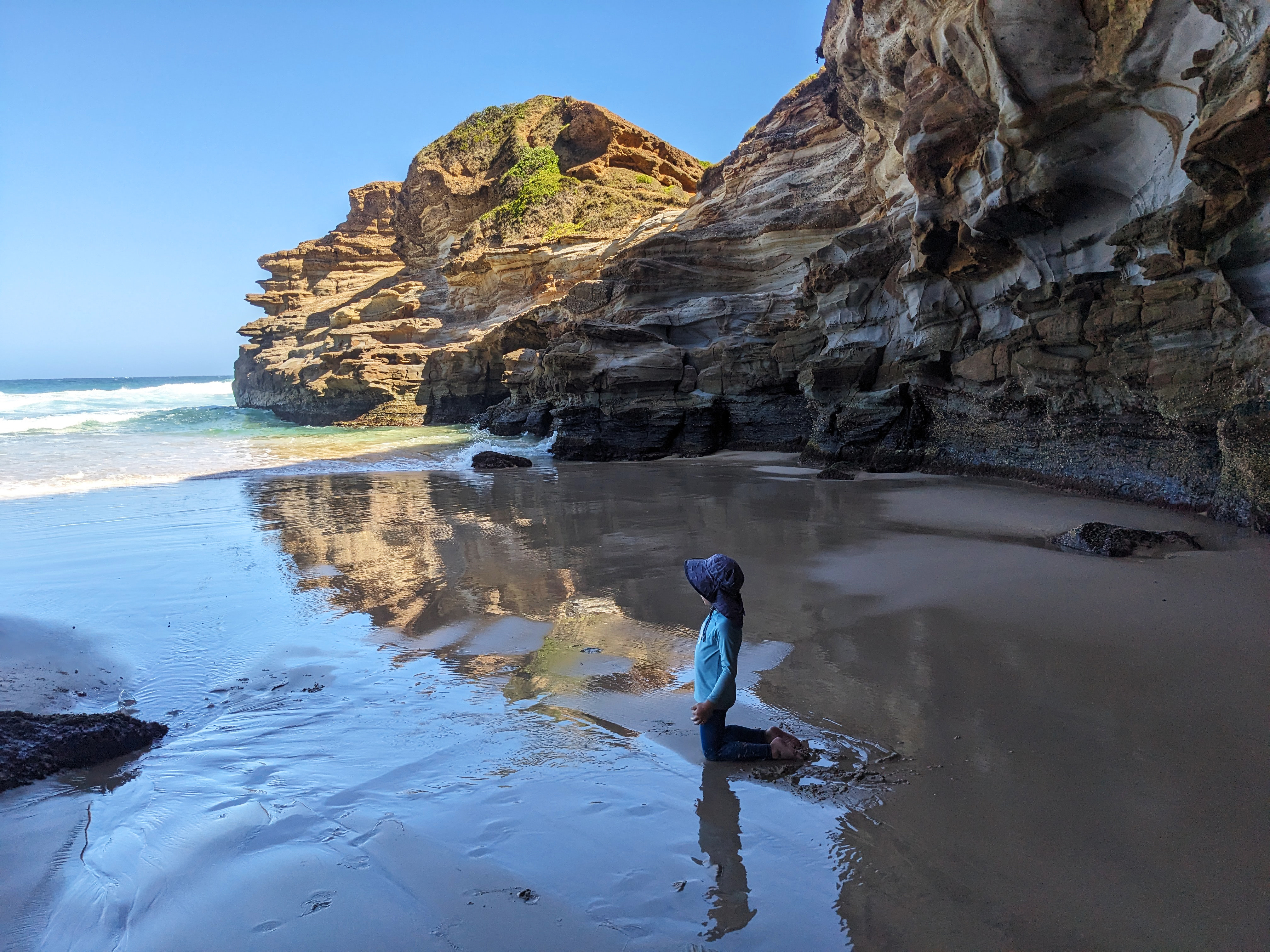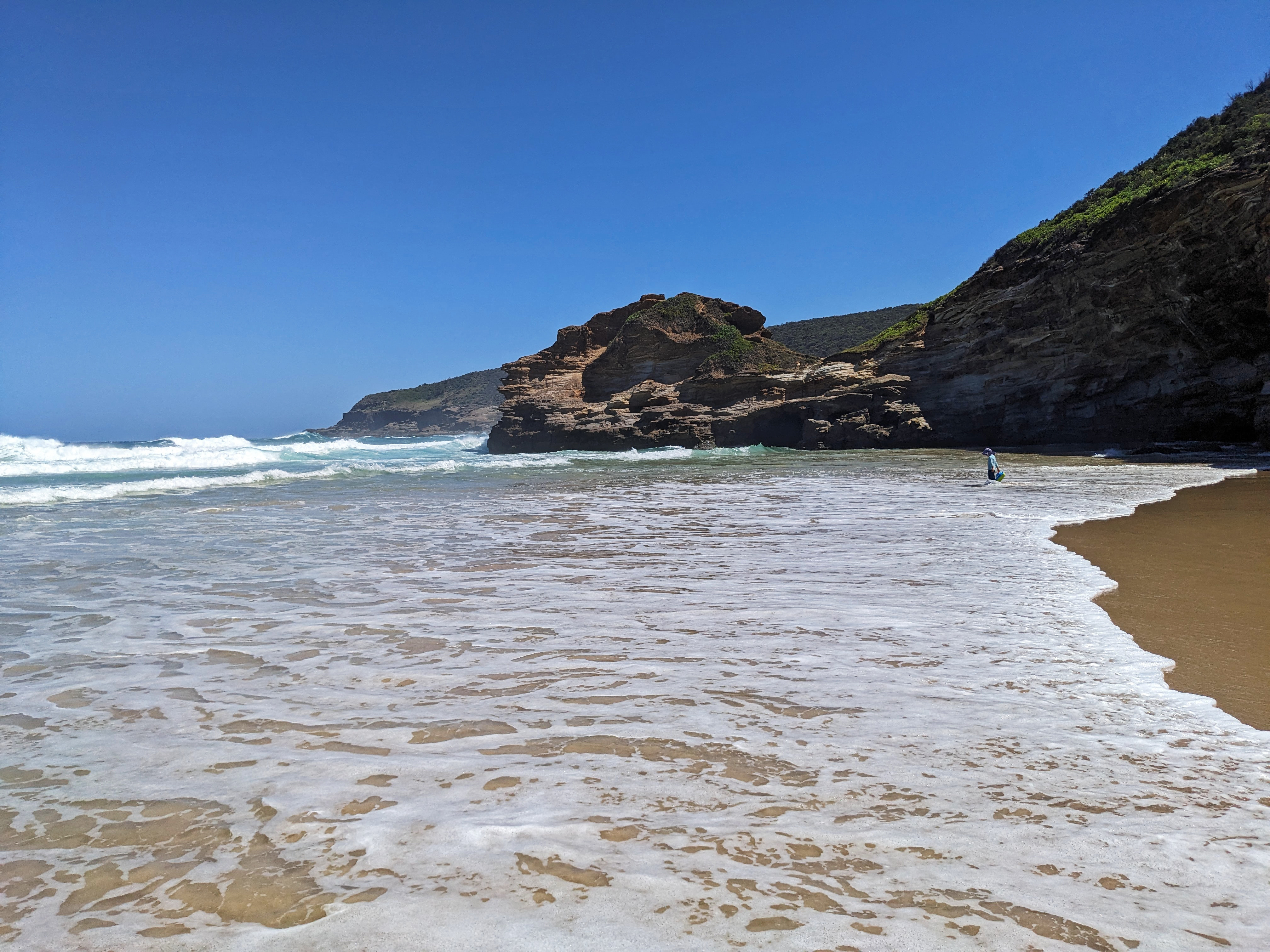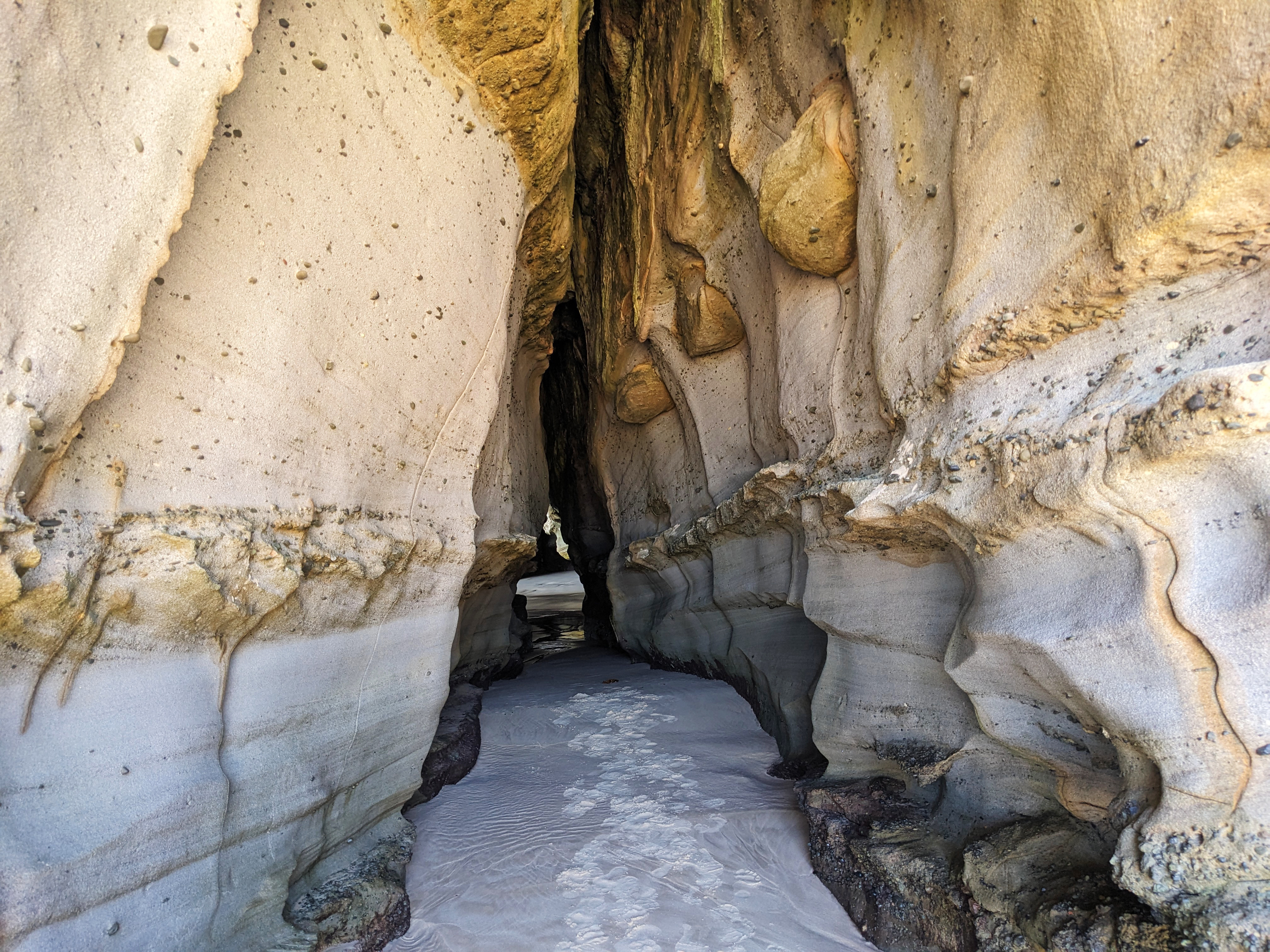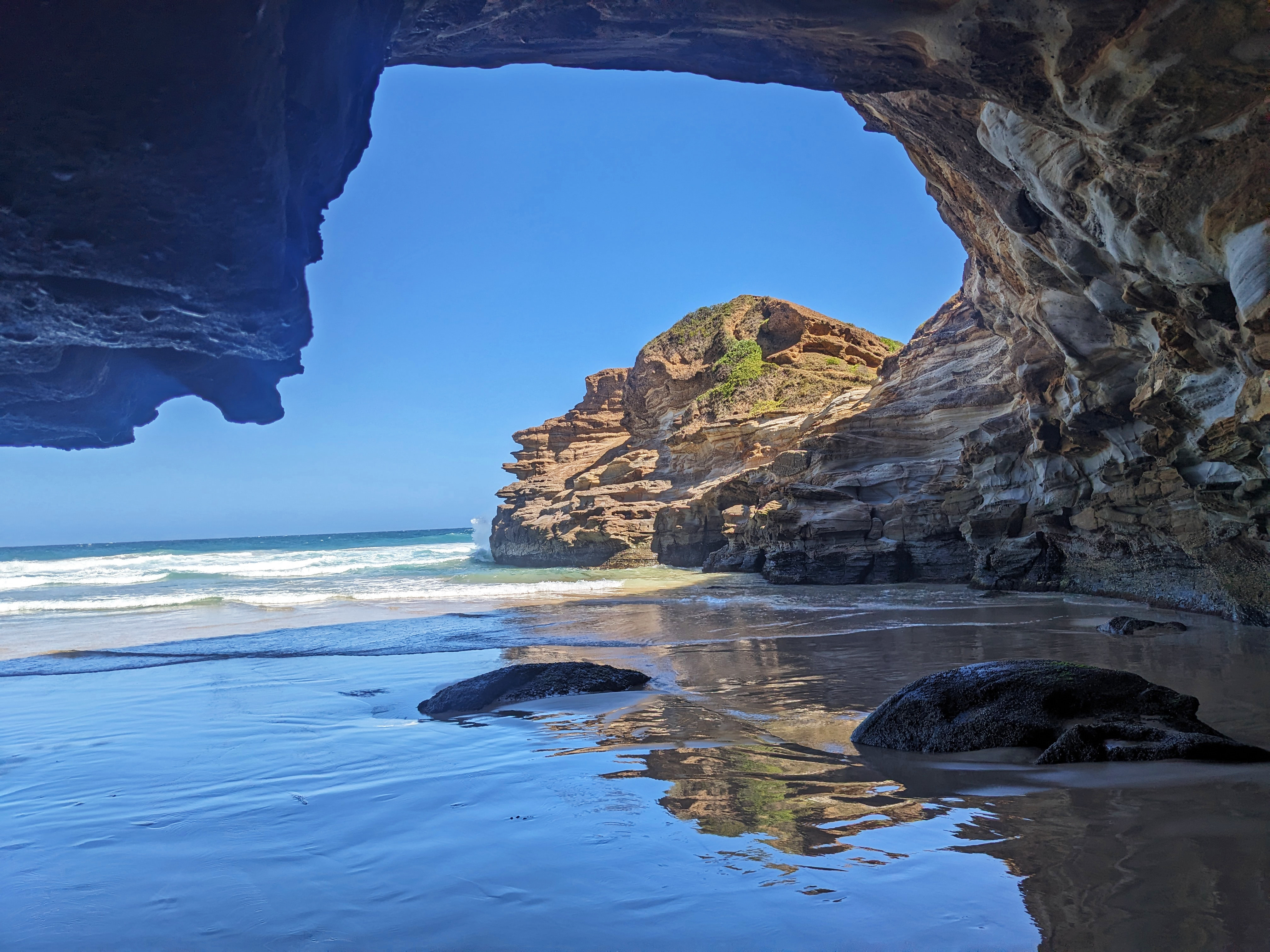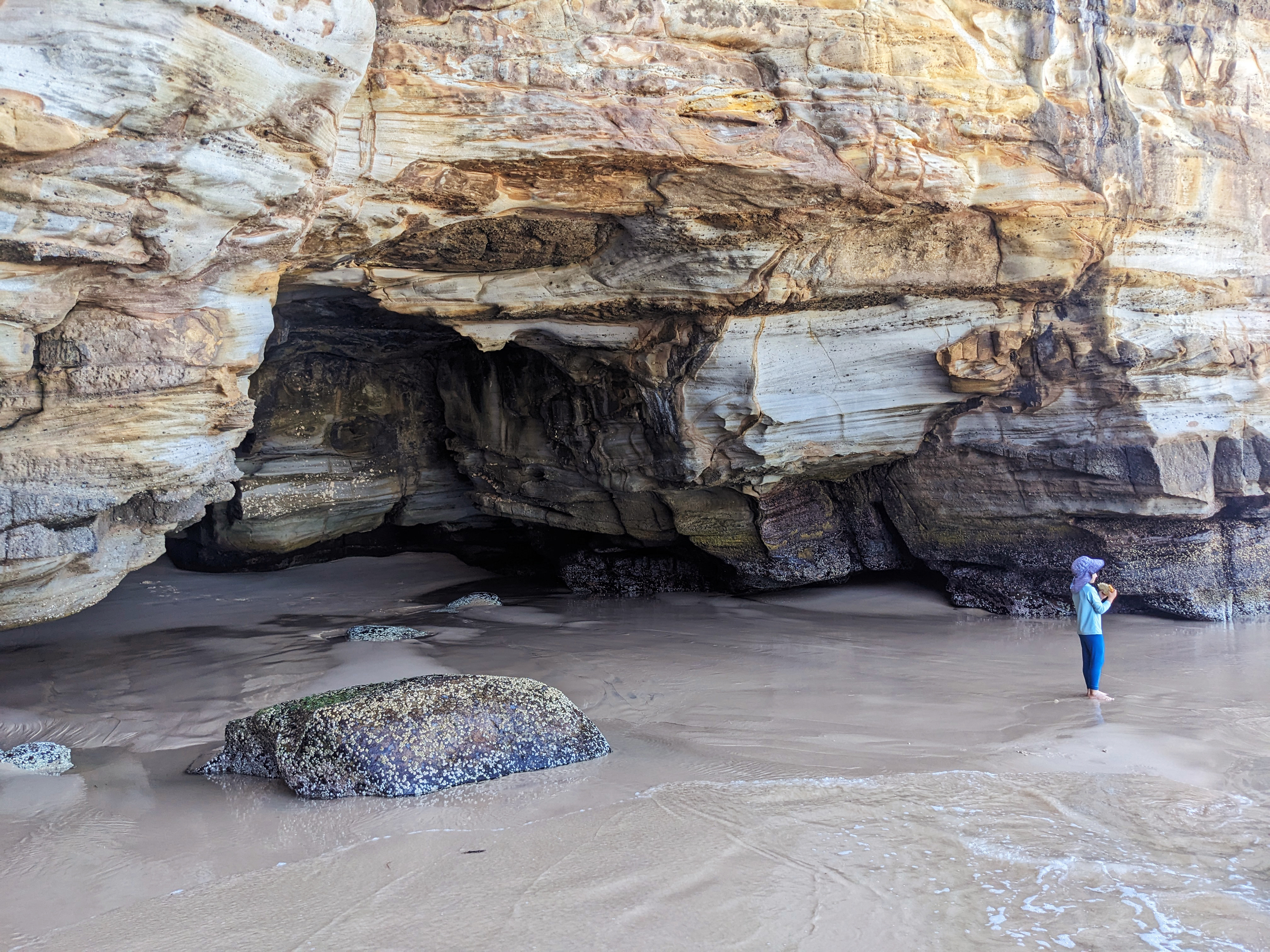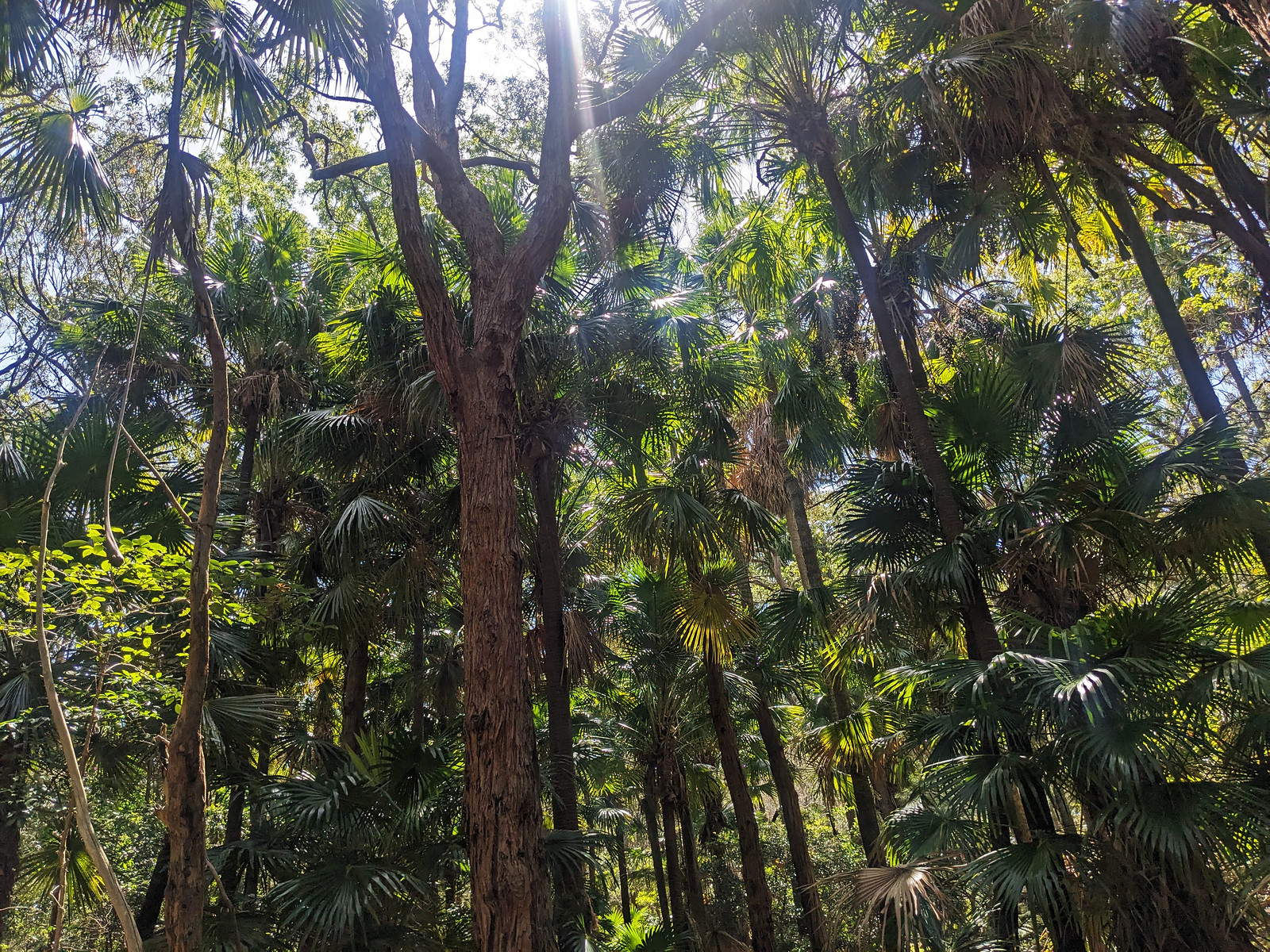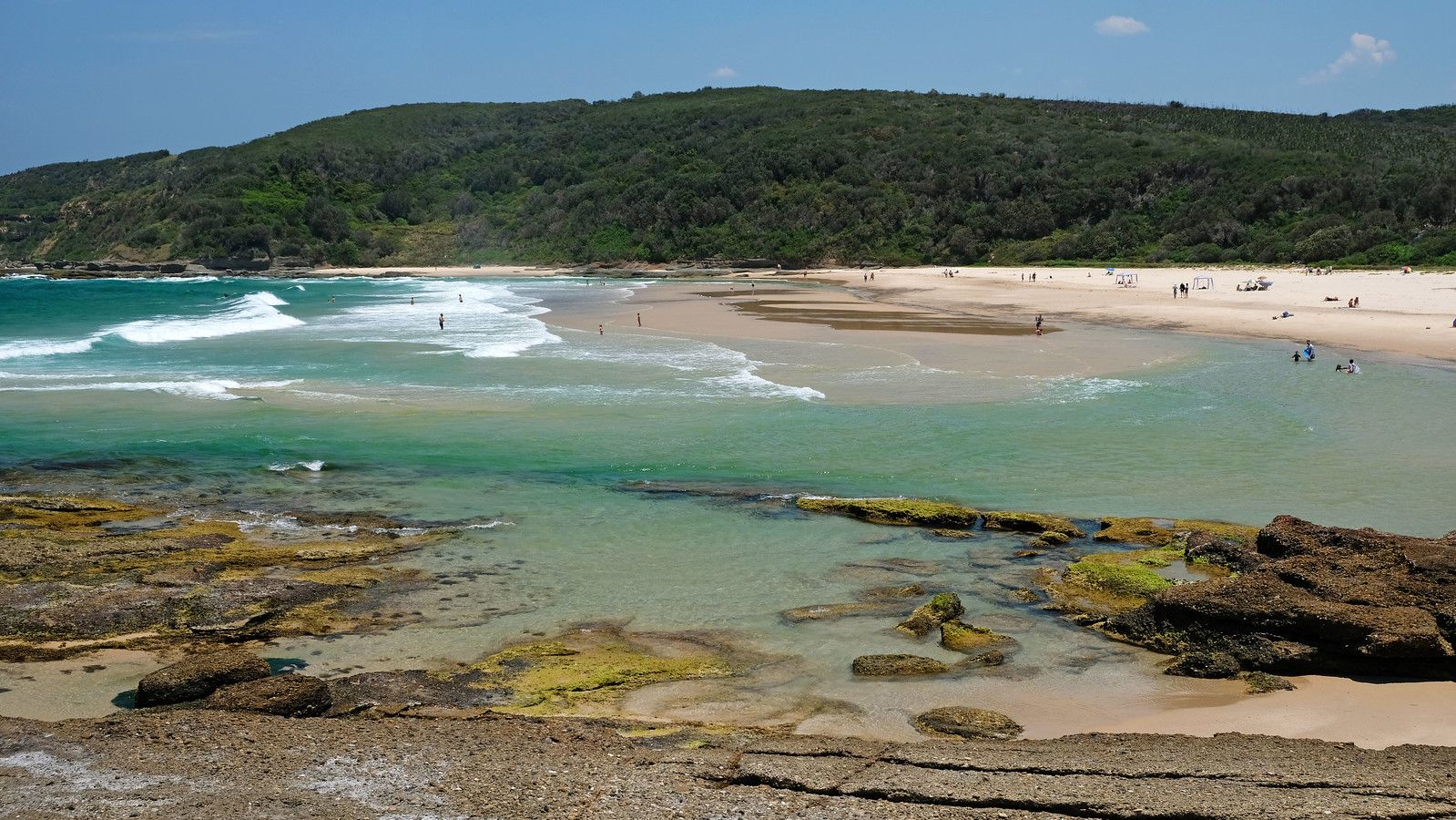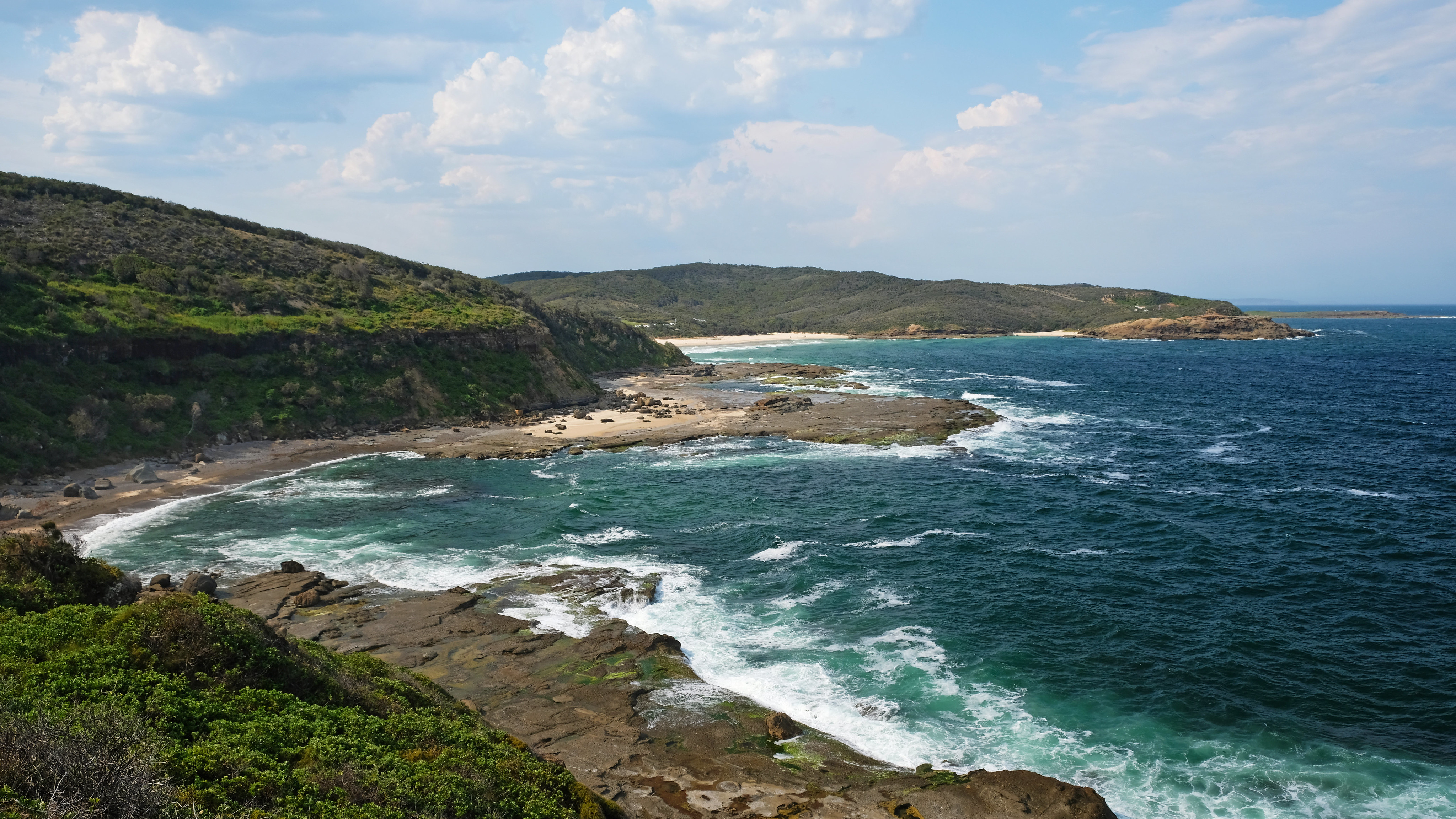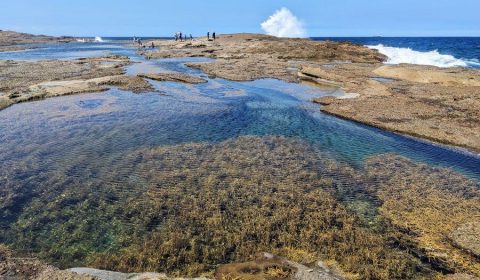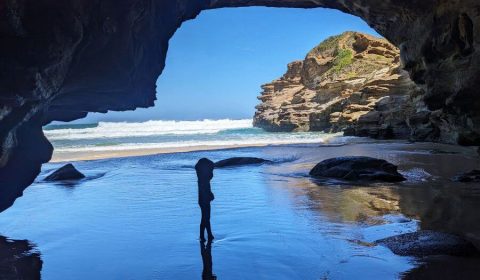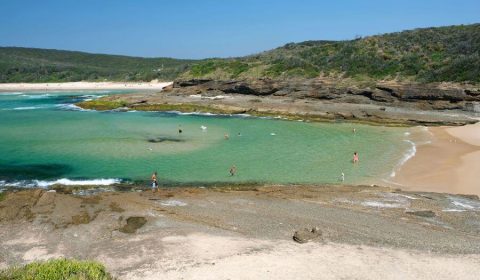You know why it’s impossible to get bored of beaches in New South Wales? Not, not only because they’re insanely beautiful. But also because even when you feel you got to know an area quite well, one day you stumble upon a beach you’ve somehow never heard about before. And wow! You stand there, speechless, because it’s unbelievable that it’s not only a jaw-dropping, breathtaking beauty, but empty, as well. That was Ghosties Beach on the Central Coast for me, on an average Monday in the summer of 2024.
Okay, I admit I’ve heard about it, but not too much, only enough to pique my interest. And you bet I won’t give up until I find the Ghosties Beach cave and see it for myself. Well, you do have to see it for yourself, and the correct name is “Ghosties Beach caves”, because there are two of them. And they’re among the most picturesque sea caves in Australia! (No, I haven’t seen all the Australian sea caves, but I’m on it.)
This post is everything I learned about the Ghosties Beach sea caves: how to get there, and why you should get there, and how to visit safely. And there’s a ton of pictures, too, that I can’t help taking and posting here. Enjoy.
When to visit the Ghosties Beach caves?
This is the most important thing to know before you go: you can’t visit the caves any time. You need low tide (0.3m is ideal) and slight swell to visit it safely.
Outside of low tide, the entrance of the caves is immersed in water, and accessing them isn’t safe. Even during low tide, if the swell isn’t low, the caves may still be unsafe to enter. You don’t want a larger wave to knock you to the inner walls of the cave. It’s especially true for the second cave.
So please be careful and check the Ghosties Beach swell and Ghosties Beach tide times before you visit. Keep in mind that conditions can change unpredictably and suddenly, and keep an eye on the time, too. You don’t want to be stuck in any of the caves when larger waves start to roll in.
How to get to Ghosties Beach and the Ghosties Beach sea caves?
Ghosties Beach is located in the Munmorah State Conservation Area on the northern end of the Central Coast. It’s a beauty on its own (which can be said about many Central Coast beaches), but the Ghosties Beach Caves, also known as the Rainbow Caves, are what makes it truly special. So let’s see how to get to the Ghosties Beach Caves, because you can’t simply drive there.
You’ll need a car nevertheless, as there are no public transport options to access the trailhead and the beach. If you don’t have your own car, rent one. It takes about 1.5-2 hours to reach the trailhead for Ghosties Beach from Sydney, and roughly about an hour from Newcastle.
Best place to stay on the Central Coast:
- luxury: Beachside Villa in Ettalong Beach (southern Central Coast), The Beachcomber Hotel & Resort in Toukley (northern Central Coast)
- mid-range: NRMA Ocean Beach Holiday Resort in Umina (southern Central Coast), Ibis Styles The Entrance (northern Central Coast)
- budget: Nightcap at Ocean Beach Hotel in Ettalong Beach (southern Central Coast), Blue Lagoon Beach Resort in The Entrance (northern Central Coast)
It’s a remote beach that requires walking, but it’s a rewarding walk and quite easy, too (mostly on the beach, in the sand). It’s about 1.6 km one-way.
Park your car in one of the few designated parking spots on Hooey Street or on Surfside Drive in Catherine Hill Bay. The trailhead is from Hooey Street, but it’s a narrow street where you can’t park on the side of the road, and the track that starts there is the Moonee Beach walking track. This is what you need to follow, Ghosties Beach is the neighbor of Moonee Beach, you’ll find it just over the sand dunes.
First, you’ll get down to Moonee Beach (it takes about 20 minutes). You need to walk to the southern end of the beach, then cross the sand dunes and continue walking all the way south on Ghosties Beach to find the caves.
Ghosties Beach Caves walking info:
- Parking: Hooey Street or Surfside Drive in Catherine Hill Bay
- Trailhead: Moonee Beach walking track
- Route: Moonee Beach – sand dunes behind Flat Rocks Point – Ghosties Beach
- Distance: ~1.6 km one-way
- Difficulty: easy
Ghosties Beach caves map
Here I marked the Ghosties Beach sea caves walk on a map for you:
Enjoy the way: Moonee Beach and Ghosties Beach
The two neighboring beaches are remote gems on the Central Coast, with a wild feel and barely any people (or facilities, so bring enough water!). If you have a full day for this adventure, make it a day trip, and don’t worry about getting bored as there’s a lot to do. It’s a convenient day trip either from Sydney or from Newcastle.
Moonee Beach walking track
Sheltered snorkeling and water play on Moone Beach
While Moonee Beach is mainly a surfing beach, there’s a very sheltered and shallow area at the southern end of the beach, protected by the reef and Flat Rocks Point. It’s great for kids to splash around, and everyone will enjoy snorkeling, exploring the tiny rock islands and tidal pools, or watching the cormorants, seagulls and herons resting or feeding in the tidal pools. (Don’t leave food unattended, seagulls are on the lookout for your sandwich.)
Though this southern area of Moonee Beach is very sheltered, it’s not that ideal for swimming, because it’s too shallow. But with a 4-year-old boy I found it just perfect. The sand is soft, the water warms up and there are no waves (or gentle waves only) in the sheltered area as the tide is falling.
Moone Beach facilities:
- Toilets? No
- Showers? No
- Drinking water? No
- Lifeguard? No
Flat Rocks Point walk
As you’re on your way to Ghosties Beach, it’s worth taking a detour to Flat Rocks Point. There’s a short, easy, scenic walking trail that leads you to the tip of the peninsula. You can look over the beaches in both directions and marvel at the powerful waves. It’s not much of a hike, but is a nice addition.
Your peaceful paradise on Ghosties Beach
Ghosties Beach is tucked between two scenic headlands and backed up by dramatic cliff walls and lush greenery. It’s an awesome beach in its own right, with a serene, tranquil vibe, and not many people around (and no facilities). If this beach would be anywhere in the Mediterranean, I bet it would be fully packed! But it’s in New South Wales, “down under”, among thousands of other breathtaking beaches. That’s the only sensible explanation to me why we were alone there on an average summer (week)day. You might share it with a few other families on a weekend.
Ghosties Beach is not sheltered, the waves are quite powerful and look very impressive! But the water gets relatively shallow at low tide, so you can play in the waves. The sand is soft and pristine, the color of the water is the most beautiful turquoise, and there’s some natural shade given by the high cliffs. The sea caves are at the southern end of the beach.
Ghosties Beach facilities:
- Toilets? No
- Showers? No
- Drinking water? No
- Lifeguard? No
Explore the Ghosties Beach Caves (Rainbow Caves) at low tide
They’re at the southernmost part of Ghosties Beach, and you’ll notice them, because there’s a tall, narrow opening in the rock wall. A slot canyon, kind of. It’s insanely picturesque!
The larger cave is accessible through this dramatic slot canyon, and we fell in love with it at first sight (is it possible not to?). It’s one of the biggest walk-through caves on the east coast of Australia! The shapes and patterns on the walls are amazing, you can look for crabs, and you can marvel at the views from the cave.
The second cave is smaller and further in. Once you proceed through the first cave, you’ll find yourself on a small sandy beach (which exists only at low tide, of course). But this tiny stretch of sand connects you to the second cave, which is smaller, but amazed us with marvelous colors on its inner walls. Shades of red and purple are displayed, with tiny gold sparkling on the wall.
You need really low tide (0.3m) and low swell to visit this second sea cave safely. There’s one deep section to pass through before entering the cave, and it was shocking to experience how quickly the water filled it up. You blink and suddenly find yourself in chest high water, even though it doesn’t look like a deep section until you are in it.
You need to see the Ghosties Beach sea caves for yourself, because neither words nor pictures do justice to these sea caves. They’re among our favorite places in all of New South Wales!
Other things to do in Munmorah State Conservation Area
The Ghosties Beach caves are among the most spectacular caves near Sydney, but the Munmorah State Conservation Area is home to many more natural beauties. This park is located between Budgewoi and Catherine Hill Bay, in the Lake Macquarie area, and it’s one of the most underrated parks, visited by surprisingly few people, especially given its close proximity to Sydney. But it’s home to stunning beaches, coastal tracks and lookouts.
Let’s see some that I recommend visiting:
Lake Munmorah
Lake Munmorah is actually a large lagoon formed as part of the Tuggerah Lakes. For an easy lakeside stroll take the paved boardwalk between Tom Burke Reserve and Colongra Bay Reserve.
Elizabeth Bay Park is another lakeside park, great for a picnic or launching your canoe, because it has a designated boat launch area.
Snapper Point Lookout
Snapper Point is one of my favorite lookouts on the Central Coast, and it’s one of the highlights of the Munmorah State Conservation Area. In one direction you get stunning views of Frazer Beach, in the other you’ll see an impressive sea cave (inaccessible from land) and the Snapper Point blowhole. It’s a unique sight (and sound), though not as extraordinary as the Kiama Blowhole. (Well, it takes effort to stand out on this coastline.)
The Palm Track
The Palm Track is a 1 km loop trail, starting from the Palms Picnic Area. It’s conveniently on your way towards Frazer Beach, and it’s one of the most picturesque palm forests we’ve seen near Sydney. Easy walk, pretty reward.
Frazer Beach
Frazer Beach and neighboring Bongon Beach have incredibly white sand, turquoise water and a remote feel. Yet they’re easy to access and Frazer Beach even offers some facilities (toilets and picnic tables with EPIC views!).
Frazer Beach is the longer one, about 400 meters. It’s popular among local surfers, and it’s a fun beach for families, too. The water gets very shallow at low tide, with sand islands in the middle, perfect for water play. You find rock pools to the right of Frazer Beach. They’re not very large, but just enough for a refreshing dip.
Frazer Beach is connected to Bongon Beach by a short walk, either through the rocky platform at the foot of the headland (at low tide only) or through the headland. You can also walk there from the Snapper Point parking lot. But no matter where you park, a bit of a walk is required to access Bongon Bay. It’s more protected than Frazer Beach, and the water gets very shallow at low tide, which makes it the perfect family-friendly beach.
Wybung Lookout
Wybung Lookout, also called Munmorah Lookout, is accessible by car, though you need to drive on unsealed roads to access it. But the road quality is fairly good, and there’s no need for a 4WD.
The lookout treats you with views of the green heathland and the bright blue ocean, Birdie Beach and Bird Island in the distance.
Wybung Head Lookout
If you drive further, you end up at Wybung Head Lookout. It’s a dead end, but you can continue on foot. A short trail takes you to the tip of the headland. It’s a lovely walk, though it couldn’t compete with Snapper Point.
